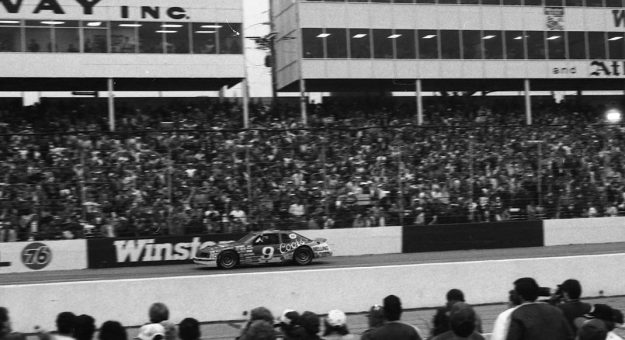Imagine running 200 mph in a three-wide, eight-row deep pack of cars at Florida’s Daytona Int’l Speedway or Talladega (Ala.) Superspeedway.
Nearly four times faster than a normal Sunday afternoon drive, it’s definitely not an everyday trip down a major interstate with the radio playing.
Today’s NASCAR drivers depend heavily on those important individuals stationed high above the tracks who serve as a second set of eyes. On many occasions, spotters have kept drivers out of harm’s way and helped them to make decisions that paved the way to victory lane.
Seven-time Cup Series champion Jimmie Johnson is happy to have help from above.
“We depend so heavily on the spotters in all of the races we compete in,” Johnson said. “They are watching out for us and in our ear to help us make split-second decisions that keep us out of harm’s way. My spotter, Earl Barban, has done an amazing job over the years and definitely contributed to the success we’ve enjoyed. Spotters are so important in our sport and have been for many years.”
Spotters were used in NASCAR competition as early as 1950.
Raymond Parks, credited as NASCAR’s first multi-team owner, is considered the first to provide two-way radios for his drivers. Parks utilized World War II “walkie-talkies,” but the venture didn’t last long, as other drivers and teams complained to NASCAR founder Bill France that having them was an illegal advantage and they were banned for a short time.
On Feb. 9, 1952, NASCAR sportsman drivers competed alongside those in the modified division on the 4.1-mile Beach and Road Course in Daytona Beach, Fla. A total of 118 drivers took the green flag, with Tim Flock winning.
Flock was disqualified for improper roll bars, but was told before the race he could run them. Ultimately, Jack Smith was declared the winner.
Al Stevens, the third-place finisher in the sportsman class, communicated by radio with team owner Cotton Bennett. The bulky radio was bolted to the floor of his 1939 Plymouth, allowing Bennett and two spotters along the beach to communicate as Stevens wheeled his car lap after lap.
“This has any other type of driver-pits communication beat by a mile,” Stevens told members of the media after the race, according to Greg Fielden’s book, “High Speeds at Low Tide.”
Driver Jack Smith is credited with being the first to win a NASCAR superspeedway event while maintaining two-way radio communication with his pit crew. Smith and crew chief Bud Moore tried to use radios during Charlotte Motor Speedway’s inaugural 600-mile event on June 19, 1960.
However, the rough surface caused the radio in the car to fail. The team tried again and won the Firecracker 250 at Daytona Int’l Speedway on July 4, 1960.
Still, radios were not in wide use, as the technology had not been developed for quality transmissions at high speeds.
The first breakthrough in driver-spotter communication came when Bobby Allison tried a CB radio set-up in his Holman Moody Ford at California’s Riverside Int’l Raceway on Jan. 10, 1971. The initial attempt failed as Allison could not hear crew chief Eddie Allison. But when the series returned to Riverside on June 20 of that year, Allison’s radio worked.
With a new system designed by Chuck Santorre, an employee of Motorola, the sound was crisp from Allison to his pits as well as Santorre, who was stationed high in the frontstretch grandstands.
At one point during the 153-lap race, a multi-car crash completely blocked the track coming out of a blind spot.
“I went out through the dirt and the cloud of dust and missed everything,” Allison said. “I won the race so easy that day, I didn’t have to race anybody. About three races later, Richard Petty walked over to me and asked, ‘How do I get some of them there things?’
“Flying the airplane, I could take my little radio and talk to a guy a thousand miles away. I was so tuned into radio communication; it made it really easy for me,” Allison explained. “As the spotters got better and better, they could say so-and-so is weak getting into the corner or so-and-so is weak getting off the corner. They could feed the driver the right kind of information to help them advance and they could warn the driver of an unseen problem.”
To continue reading, advance to the next page.
